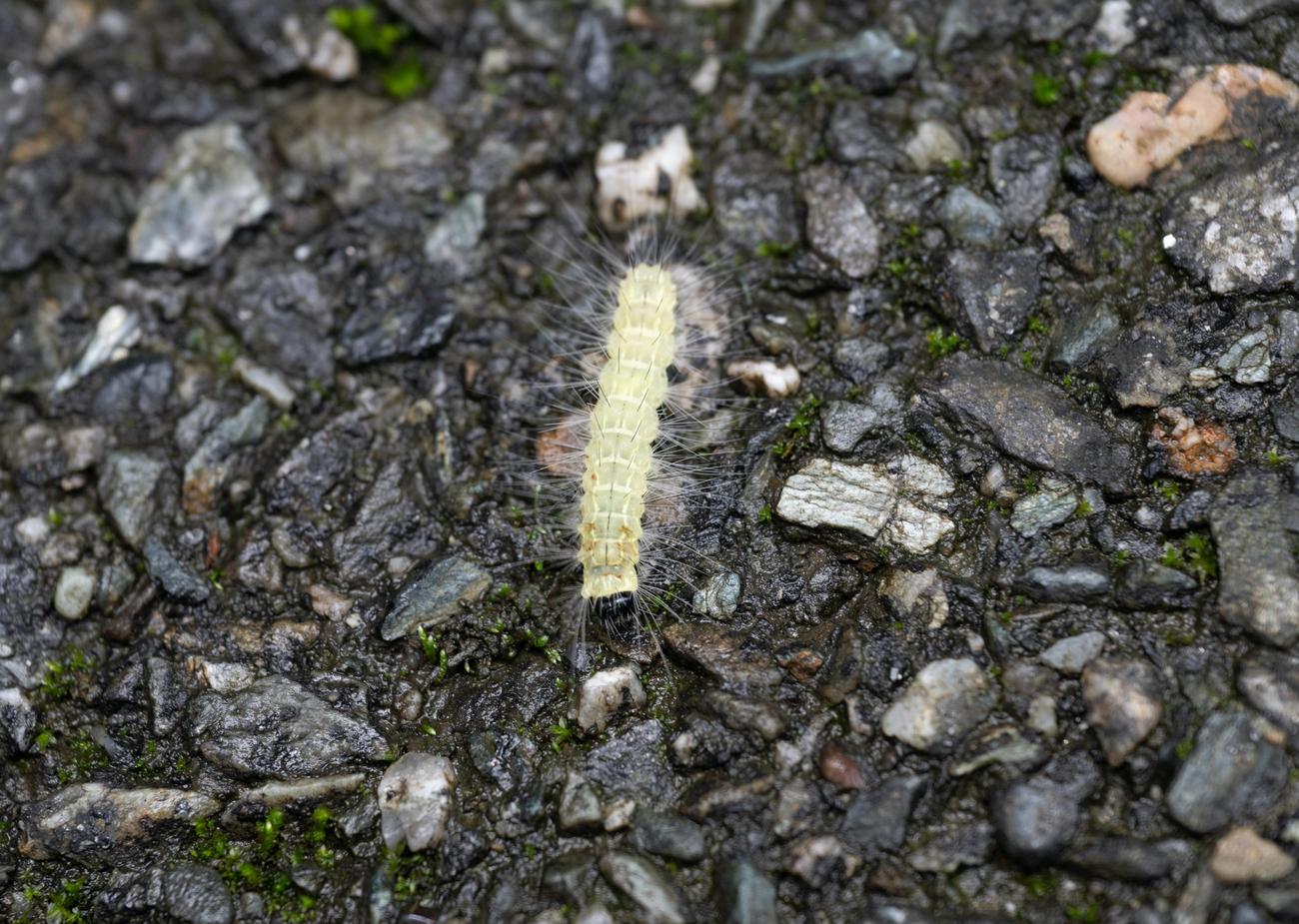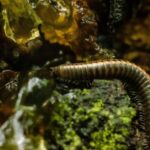Unveiling the Centipede Diet: Exploring What Centipedes Eat

Curious minds have long been fascinated by the enigmatic world of centipedes – those agile, multi-legged creatures that strike a balance between repulsion and awe. Yet, beyond their striking appearance and lightning-fast movements, lies a captivating aspect of their existence: their diet. As an experienced entomologist, I have dedicated years of research to unraveling the dietary habits of these remarkable arthropods. It is through this exploration that I have discovered the diverse array of prey items consumed by centipedes, from small insects to spiders, and even other centipedes themselves. In this article, I will delve into the intricacies of the centipede diet, providing readers with comprehensive insights into what truly fuels these fascinating creatures.
What Do Centipedes Eat
Centipedes are fascinating creatures with unique feeding habits. As carnivorous hunters, they have a diverse and interesting diet. Let’s dive into the intriguing world of the centipede diet and explore what these fascinating creatures eat!
The Carnivorous Appetite
Centipedes are voracious predators, and their diet consists primarily of other insects. These nocturnal hunters hide during the day and emerge at night, actively seeking out their prey. With their elongated bodies, numerous legs, and powerful venomous fangs, centipedes are well-equipped to subdue and consume their chosen meals.
A Feast on Insects and Arachnids
Centipedes have a particular affinity for insects, making them an important part of the natural insect control ecosystem. They feast on a wide variety of insects, including spiders, cockroaches, moths, and crickets. These creepy crawlies become delectable meals for centipedes as they scuttle through the dark corners of our homes and gardens.
Cannibalistic Tendencies
In a rather surprising twist, centipedes are also known to indulge in cannibalism. Yes, you read that right! These intriguing creatures do not shy away from devouring their own kind. In their quest for sustenance, centipedes may even prey upon fellow centipedes. It’s a fascinating survival strategy that showcases the adaptability and fierce nature of these creatures.
The Mighty Amazonian Giant Centipede
Now, get ready to be amazed! The Amazonian giant centipede takes the concept of a centipede diet to a whole new level. This incredible species has been known to prey not only on insects and spiders but also on relatively large animals. Yes, you heard it correctly. The mighty Amazonian giant centipede is capable of hunting down mice, frogs, and even birds! It just goes to show that when it comes to centipede diets, the possibilities are truly astonishing.
Sense and Sensibility
While centipedes may have poor vision, they possess remarkable sensory abilities. They rely on their antennae to locate their prey, using touch and vibrations to discern the presence of potential meals. It’s truly a demonstration of their exceptional adaptability and survival instincts.
An Unexpected Menu
The centipede diet is not limited to insects and arachnids alone. These fierce predators have been known to target vertebrates as well. Yes, you heard that right! Centipedes can attack and consume creatures like lizards and even snakes. It’s a testament to the versatility and resourcefulness of these remarkable arthropods.
The Role of Water
Centipedes, like most creatures, require a source of water to survive. They may obtain water from their prey or through external means such as misting or providing a water dish in their enclosure. Having access to water is vital for their overall well-being and ensures the sustenance of their diets.
Predators and Prey
While centipedes may be fearsome predators, they are not invincible. They too, have their share of natural enemies. Animals such as badgers, wasps, shrews, toads, birds, and even chickens consider centipedes as tasty morsels. It’s a constant battle for survival in the animal kingdom, with centipedes facing threats from both within and outside their ecosystem.
Keeping Centipedes at Bay
If you want to ensure a centipede-free environment, there are a few practical steps you can take. Sealing cracks and holes in your home’s exterior is an effective way to prevent these creatures from entering. Additionally, keeping your surroundings clean and eliminating potential hiding spots can discourage centipedes from taking up residence in your space.
Conclusion
Centipedes are fascinating creatures with a captivating diet. From their preference for insects and arachnids to their cannibalistic tendencies and the mighty feats of the Amazonian giant centipede, these predators exhibit a remarkable range of feeding habits. While their dining choices may seem formidable, it’s important to remember that centipedes are generally harmless to humans. So, next time you encounter a centipede, marvel at its hunting prowess and appreciate the role it plays in maintaining the delicate balance of our ecosystems.
“The diverse and intriguing diet of centipedes reveals their role as nature’s formidable predators.”
Centipedes are fascinating creatures with a multitude of intriguing features. Did you know that some centipedes can have up to 354 legs? Yes, you read that correctly! If you want to learn more interesting and mind-boggling facts about centipedes, click here: interesting facts about centipedes and prepare to be amazed.
What Do Centipedes Eat?
[youtube v=”4GfLI_k97xo”]
Diet of Carnivorous Centipedes
Centipedes, fascinating creatures with their many legs and quick movements, are carnivorous hunters that feed on a diverse range of prey. Their diet primarily consists of other insects, making them valuable in controlling pest populations.
A Wide Variety of Prey
Centipedes actively seek out prey, particularly at night when they are most active. Their diet includes a wide variety of insects, such as spiders, cockroaches, moths, and crickets. These small but mighty creatures play an essential role in keeping your home free from unwanted pests.
Cannibalistic Tendencies
In their quest for food, centipedes may even engage in cannibalism. They have been observed preying upon fellow centipedes, showcasing their fierce nature and intense drive for survival.
Surprising Hunting Abilities
Centipedes possess unique sensory abilities, as their poor vision is compensated for by their remarkable antennae. These sensory organs allow them to locate prey, ensuring their hunting success. While they primarily feed on insects and arachnids, centipedes are not limited to these smaller creatures. In fact, some species are capable of hunting down and consuming vertebrates, such as lizards, snakes, frogs, and even birds.
Water Source and Prey Moisture
Centipedes require a source of water to survive. While they obtain a significant amount of moisture from their prey, they still rely on external sources to fulfill their hydration needs. This can be achieved through a water dish placed within the centipede’s enclosure or by regularly misting the area where they reside.
“Centipedes require a source of water and obtain it from prey or external sources.”
Natural Enemies and Pest Prevention
Despite their formidable appearance, centipedes are generally harmless to humans. However, they do have natural enemies in the animal kingdom, including badgers, wasps, shrews, toads, birds, and chickens. Taking practical steps, such as sealing cracks and holes and maintaining a clean environment, can help prevent centipedes from entering your home.
“While centipedes may seem formidable, they are generally harmless to humans.”
A Vast Array of Centipede Species
Did you know that there are approximately 8,000 different species of centipedes? However, only 3,000 of these species have undergone extensive scientific study, leaving much to be discovered about these fascinating creatures.
Conclusion
Centipedes, with their carnivorous nature and diverse diet, play a vital role in maintaining the balance of ecosystems. From spiders and cockroaches to mice and birds, these small predators ensure that pest populations are kept in check. While they may seem intimidating, centipedes are generally harmless to humans. By understanding their dietary preferences and natural enemies, we can coexist with these intriguing creatures in our homes and gardens.
“Centipedes play a vital role in maintaining the balance of ecosystems by controlling pest populations.”

FAQ
Question 1
What do centipedes eat?
Answer 1
Centipedes are carnivorous creatures that primarily feed on other insects. Their diet includes a wide range of prey items such as spiders, cockroaches, moths, crickets, and even other centipedes. Some larger species like the Amazonian giant centipede can even prey on relatively large animals like mice, frogs, and birds.
Question 2
Are centipedes capable of hunting vertebrates?
Answer 2
Yes, centipedes can attack and eat vertebrates like lizards and snakes. While their main diet consists of insects, centipedes have been known to prey on small vertebrates when the opportunity arises.
Question 3
What attracts centipedes to certain areas?
Answer 3
Centipedes are attracted to areas where their prey is abundant. They often seek out damp places like bathrooms and closets, as these environments tend to support a higher population of insects and spiders.
Question 4
How do centipedes locate their prey?
Answer 4
Centipedes have poor vision, but they rely on their antennae to locate prey. They use their sense of touch and chemical signals to detect the presence of potential prey nearby.
Question 5
Are centipedes harmful to humans?
Answer 5
While centipedes possess venomous glands, their bites or pinches are mainly a defense mechanism and are relatively harmless to humans. It is important to remember that centipedes usually avoid human contact and their bites are rare occurrences.
- Crypto Quotes’ Red Flags: Avoid Costly Mistakes - June 30, 2025
- Unlock Inspirational Crypto Quotes: Future Predictions - June 30, 2025
- Famous Bitcoin Quotes: A Deep Dive into Crypto’s History - June 30, 2025
















